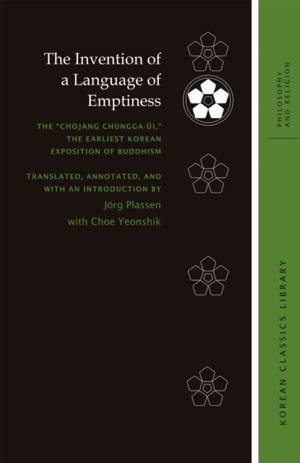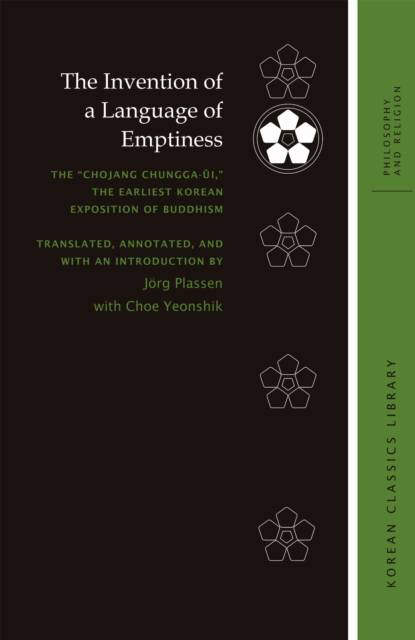
- Retrait gratuit dans votre magasin Club
- 7.000.000 titres dans notre catalogue
- Payer en toute sécurité
- Toujours un magasin près de chez vous
- Retrait gratuit dans votre magasin Club
- 7.000.0000 titres dans notre catalogue
- Payer en toute sécurité
- Toujours un magasin près de chez vous
The Invention of a Language of Emptiness
The "Chojang Chungga-ŭi," the Earliest Korean Exposition of Buddhism
74,45 €
+ 148 points
Description
This volume is the first annotated translation in any language of the "Chojang chungga-ŭi" (The Meaning of the "Middle and Provisional" in the "First Stanza"), a little-known text that yielded considerable influence on early East Asian Buddhism. It corresponds to the first chapter of the Taesŭng saron hyŏnŭi ki (Notes on The Dark Meaning of the Four Treatises, [Belonging to] the Great Vehicle), a Samnon/Sanlun compendium written by the Paekche monk Hye'gyun (fl. 6th/7th c.) after he studied with the famous Chinese Sanlun teacher Falang (507-581).
Apparently directed at beginners, the "Chojang chungga-ŭi" explains fundamental concepts in detail, thus giving precious corroborative information on Chinese Sanlun as mirrored in Jizang's (549-623) works. Textual parallels with Jizang's Lunji (Traces of the Treatises) shed new light on the extent that both disciples were indebted to their teacher, Falang. Additionally, the text provides first-hand insight into the nature of early Samnon in Paekche and important clues for understanding the origins of the famous Silla monk Wǒnhyo's (617-686) patterns of exegesis. As the title implies, the text centers on the "First Stanza," the fundamental exegetical formula Samnon/Sanlun students under Falang and his immediate successors had to master. The repetitive and formulaic style of the text shows that, contrary to widespread misconceptions, Sanlun/Samnon exegetes were less concerned with the scholastic study of authoritative texts than using the "Chojang chungga-ŭi" to rehearse formulae designed to lead the practitioner toward awakening. In doing so, they struggled to find new ways of expression that transcended the usual apophatic vs. cataphatic dichotomy of a middle path, avoiding any reification of the "middle" and the "provisional." They created instead cataphatic formulae that constantly affirmed yet did not produce fixed meaning, just as "a," the first character of the Siddham alphabet, pervades all texts, yet, as a negation prefix, constantly denies any attribution. The Invention of a Language of Emptiness will be of great use to those interested in commentarial exegesis as meditational practice and East Asian Buddhists' attempts at developing a language of emptiness.Spécifications
Parties prenantes
- Traducteur(s):
- Editeur:
Contenu
- Nombre de pages :
- 232
- Langue:
- Anglais
- Collection :
Caractéristiques
- EAN:
- 9798880701070
- Date de parution :
- 31-12-25
- Format:
- Livre relié
- Format numérique:
- Genaaid
- Dimensions :
- 152 mm x 229 mm

Les avis
Nous publions uniquement les avis qui respectent les conditions requises. Consultez nos conditions pour les avis.





